Available Standards (3315)
Showing standards 1601 - 1800
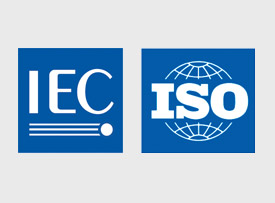
Information technology — Automatic identification and data capture techniques — Syntax for high-capacity ADC media
This document specifies a transfer structure, syntax, and coding of messages and data formats when using high-capacity ADC media between trading partners (specifically between suppliers and recipie

Information technology — Automatic identification and data capture techniques — Unique identification — Part 4: Individual products and product packages
This part of ISO/IEC 15459 specifies a unique string of characters for the identification of individual products and product packages.

Information technology — Automatic identification and data capture techniques — Unique identification — Part 6: Groupings
This part of ISO/IEC 15459 specifies a unique string of characters for the identification of groupings of products, product packages, transport units and items.
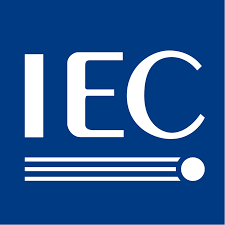
Information technology — Big data reference architecture — Part 2: Use cases and derived requirements
ISO/IEC TR 20547-2:2018 provides examples of big data use cases with application domains and technical considerations derived from the contributed use cases.
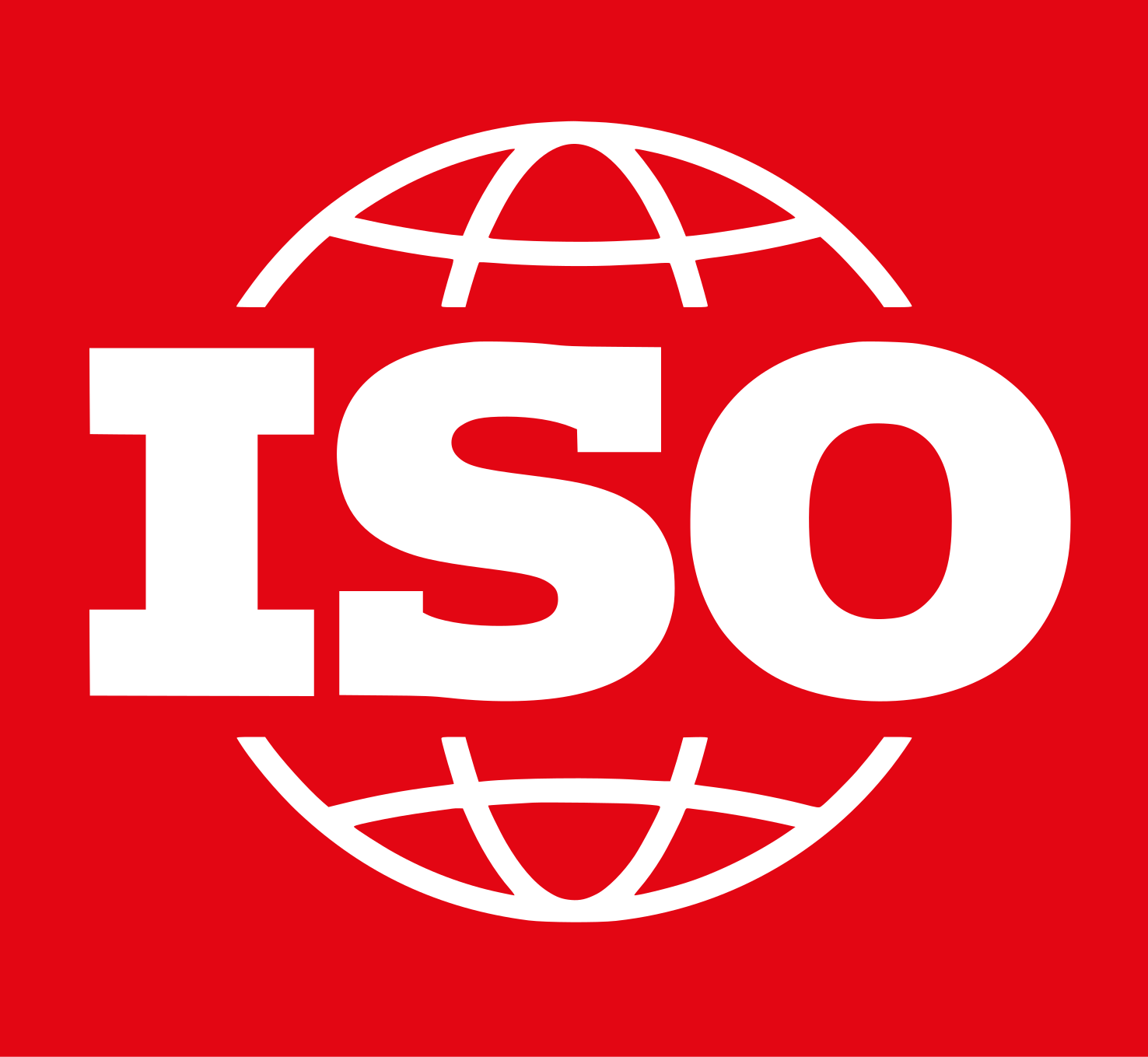
Information technology — Big data reference architecture — Part 2: Use cases and derived requirements
ISO/IEC TR 20547-2:2018 provides examples of big data use cases with application domains and technical considerations derived from the contributed use cases.

Information technology — Big data — Overview and vocabulary
This document provides a set of terms and definitions needed to promote improved communication and understanding of this area.

Information technology — Big data — Overview and vocabulary
This document provides a set of terms and definitions needed to promote improved communication and understanding of this area.

Information technology — Big data — Overview and vocabulary
This document provides a set of terms and definitions needed to promote improved communication and understanding of this area.

Information technology — Big data — Overview and vocabulary
This document provides a set of terms and definitions needed to promote improved communication and understanding of this area.

Information technology — Big data — Overview and vocabulary
This document provides a set of terms and definitions needed to promote improved communication and understanding of this area.
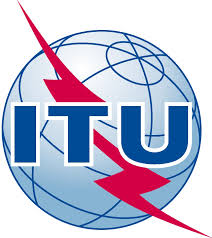
Information technology — Cloud computing - Reference architecture
Cloud computing is a paradigm for enabling network access to a scalable and elastic pool of shareable physical or virtual resources with self-service provisioning and administration on demand.

Information technology — Cloud computing — Common technologies and techniques
Common technologies and techniques

Information technology — Cloud computing — Common technologies and techniques
Common technologies and techniques

Information technology — Cloud computing — Framework of trust for processing of multi-sourced data
This document describes a framework of trust for the processing of multi-sourced data that includes data use obligations and controls, data provenance, chain of custody, security and immutable proo

Information technology — Cloud computing — Framework of trust for processing of multi-sourced data
This document describes a framework of trust for the processing of multi-sourced data that includes data use obligations and controls, data provenance, chain of custody, security and immutable proo

Information technology — Cloud computing — Guidance for policy development
This document provides guidance on the use of international standards as a tool in the development of those policies that govern or regulate cloud service providers (CSPs) and cloud services, and t

Information technology — Cloud computing — Guidance for policy development
This document provides guidance on the use of international standards as a tool in the development of those policies that govern or regulate cloud service providers (CSPs) and cloud services, and t

Information technology — Cloud computing — Interoperability and portability
ISO/IEC 19941:2017 specifies cloud computing interoperability and portability types, the relationship and interactions between these two cross-cutting aspects of cloud computing and common terminol

Information technology — Cloud computing — Interoperability and portability
ISO/IEC 19941:2017 specifies cloud computing interoperability and portability types, the relationship and interactions between these two cross-cutting aspects of cloud computing and common terminol

Information technology — Cloud computing — Overview and vocabulary
ISO/IEC 17788:2014 provides an overview of cloud computing along with a set of terms and definitions. It is a terminology foundation for cloud computing standards.

Information technology — Cloud computing — Overview and vocabulary
ISO/IEC 17788:2014 provides an overview of cloud computing along with a set of terms and definitions. It is a terminology foundation for cloud computing standards.

Information technology — Cloud computing — Part 1: Terminology
Cloud Computing terminology

Information technology — Cloud computing — Part 1: Terminology
Cloud Computing terminology

Information technology — Cloud computing — Part 1: Vocabulary
This document provides terms and definitions for vocabulary used in the field of cloud computing.

Information technology — Cloud computing — Part 2: Concepts
Cloud Computing concepts

Information technology — Cloud computing — Part 2: Concepts
Cloud Computing concepts

Information technology — Cloud computing — Reference architecture
ISO/IEC 17789:2014 specifies the cloud computing reference architecture (CCRA).

Information technology — Cloud computing — Reference architecture
ISO/IEC 17789:2014 specifies the cloud computing reference architecture (CCRA).

Information technology — Cloud computing — Service level agreement (SLA) framework — Part 1: Overview and concepts
ISO/IEC 19086-1:2016 seeks to establish a set of common cloud SLA building blocks (concepts, terms, definitions, contexts) that can be used to create cloud Service Level Agreements (SLAs).

Information technology — Cloud computing — Service level agreement (SLA) framework — Part 1: Overview and concepts
ISO/IEC 19086-1:2016 seeks to establish a set of common cloud SLA building blocks (concepts, terms, definitions, contexts) that can be used to create cloud Service Level Agreements (SLAs).

Information technology — Cloud computing — Service level agreement (SLA) framework — Part 3: Core conformance requirements
ISO/IEC 19086-3:2017 specifies the core conformance requirements for service level agreements (SLAs) for cloud services based on ISO/IEC 19086‑1 and guidance on the core conformance requirements.

Information technology — Cloud computing — Service level agreement (SLA) framework — Part 3: Core conformance requirements
ISO/IEC 19086-3:2017 specifies the core conformance requirements for service level agreements (SLAs) for cloud services based on ISO/IEC 19086‑1 and guidance on the core conformance requirements.

Information technology — Data centres — Key performance indicators — Part 2: Power usage effectiveness (PUE) - Amendment 1
ISO/IEC 30134-2:2016
a) defines the power usage effectiveness (PUE) of a data centre,
b) introduces PUE measurement categories,

Information technology — Data centres — Key performance indicators — Part 3: Renewable energy factor (REF) - Amendment 1
ISO/IEC 30134-3:2016
a) defines the renewable energy factor (REF) of a data centre,
b) specifies a methodology to calculate and to present the REF, and

Information technology — Digital representation of product information — Part 1: General requirements
This document establishes the general requirements for Electronic Product Labelling which would be applicable to all types of product regardless of industry.

Information technology — Digital representation of product information — Part 2: Requirements for electronic devices with integral display
The scope of this standard (Part 2) addresses the specific requirements which are applicable to all types of electronic devices with an integral display such as cell phones, computer tablets, deskt

Information technology — Electronic discovery — Part 2: Guidance for governance and management of electronic discovery
This document provides guidance for technical and non-technical personnel at senior management levels within an organization, including those with responsibility for compliance with statuary and re

Information technology — Electronic discovery — Part 2: Guidance for governance and management of electronic discovery
This document provides guidance for technical and non-technical personnel at senior management levels within an organization, including those with responsibility for compliance with statuary and re

Information technology — Internet of things (IoT) use cases
ISO/IEC TR 22417:2017(E) This technical report identifies IoT scenarios and use cases based on real-world applications and requirements.

Information technology — Internet of things (IoT) use cases
ISO/IEC TR 22417:2017(E) This technical report identifies IoT scenarios and use cases based on real-world applications and requirements.

Information technology — Internet of Things (IoT) — Vocabulary
This International Standard provides a definition of Internet of Things along with a set of terms and definitions.

Information technology — Internet of things — Methodology for trustworthiness of IoT system/service
This document provides system life cycle processes to implement and maintain
trustworthiness in an IoT system or service by applying and supplementing

Information technology — Lightweight cryptography — Part 6: Message authentication codes (MACs)
This document specifies MAC algorithms suitable for applications requiring lightweight cryptographic mechanisms.

Information technology — Lightweight cryptography — Part 6: Message authentication codes (MACs)
This document specifies MAC algorithms suitable for applications requiring lightweight cryptographic mechanisms.

Information technology — Message Queuing Telemetry Transport (MQTT) v3.1.1
ISO/IEC 20922:2016 is a Client Server publish/subscribe messaging transport protocol. It is light weight, open, simple, and designed so as to be easy to implement.

Information technology — Object Management Group Business Process Model and Notation
The primary goal of ISO/IEC 19510:2013 is to provide a notation that is readily understandable by all business users, from the business analysts that create the initial drafts of the processes, to

Information technology — Open Virtualization Format (OVF) specification

Information technology — Open Virtualization Format (OVF) specification

Information technology — Process reference model (PRM) for information security management
ISO/IEC TS 33052:2016 defines a process reference model (PRM) for the domain of information security management.

Information technology — Radio frequency identification (RFID) for item management — Software system infrastructure — Part 2: Data management
ISO/IEC 24791-2:2011 defines the interface(s) that provide operations on radio frequency identification (RFID) tag data including, but not limited to, reading, writing, collection, filtering, group

Information technology — Radio frequency identification (RFID) for item management — Software system infrastructure — Part 5: Device interface
This document provides an overview of ISO 10303.ISO 10303 provides a representation of product information along with the necessary mechanisms and definitions to enable product data to be exchanged

Information technology — Reference Architecture for Service Oriented Architecture (SOA RA) — Part 1: Terminology and concepts for SOA
ISO/IEC 18384-1:2016 establishes vocabulary, guidelines, and general technical principles underlying service oriented architecture (SOA), including principles relating to functional design, perform

Information technology — Reference Architecture for Service Oriented Architecture (SOA RA) — Part 1: Terminology and concepts for SOA
ISO/IEC 18384-1:2016 establishes vocabulary, guidelines, and general technical principles underlying service oriented architecture (SOA), including principles relating to functional design, perform

Information technology — Reference Architecture for Service Oriented Architecture (SOA RA) — Part 2: Reference Architecture for SOA Solutions
ISO/IEC 18384-2:2016 describes a Reference Architecture for SOA Solutions which applies to functional design, performance, development, deployment and management of SOA Solutions.

Information technology — Reference Architecture for Service Oriented Architecture (SOA RA) — Part 2: Reference Architecture for SOA Solutions
ISO/IEC 18384-2:2016 describes a Reference Architecture for SOA Solutions which applies to functional design, performance, development, deployment and management of SOA Solutions.

Information technology — Reference Architecture for Service Oriented Architecture (SOA RA) — Part 3: Service Oriented Architecture ontology
ISO/IEC 18384-3:2016 defines a formal ontology for service-oriented architecture (SOA), an architectural style that supports service orientation.

Information technology — Reference Architecture for Service Oriented Architecture (SOA RA) — Part 3: Service Oriented Architecture ontology
ISO/IEC 18384-3:2016 defines a formal ontology for service-oriented architecture (SOA), an architectural style that supports service orientation.

Information technology — Security techniques — A framework for access management
ISO/IEC 29146:2016 defines and establishes a framework for access management (AM) and the secure management of the process to access information and Information and Communications Technologies (ICT

Information technology — Security techniques — A framework for identity management — Part 3: Practice
ISO/IEC 24760-3:2016 provides guidance for the management of identity information and for ensuring that an identity management system conforms to ISO/IEC 24760-1 and ISO/IEC 24760-2.

Information technology — Security techniques — Authentication context for biometrics
This document defines the structure and the data elements of Authentication Context for Biometrics (ACBio), which is used for checking the validity of the result of a biometric enrolment and verifi

Information technology — Security techniques — Biometric information protection
ISO/IEC 24745:2011 provides guidance for the protection of biometric information under various requirements for confidentiality, integrity and renewability/revoc

Information technology — Security techniques — Entity authentication assurance framework
Provides a framework for managing entity authentication assurance in a given context.

Information technology — Security techniques — Extension to ISO/IEC 27001 and to ISO/IEC 27002 for privacy information management — Requirements and guidelines
Although there is substantial overlap between information security and privacy management, both fields are broader.

Information technology — Security techniques — Extension to ISO/IEC 27001 and to ISO/IEC 27002 for privacy information management — Requirements and guidelines
Although there is substantial overlap between information security and privacy management, both fields are broader.

Information technology — Security techniques — Guidelines for privacy impact assessment
ISO/IEC 29134:2017 gives guidelines for
- a process on privacy impact assessments, and
- a structure and content of a PIA report.

Information technology — Security techniques — Identity proofing
ISO/IEC TS 29003:2018:
gives guidelines for the identity proofing of a person;
specifies levels of identity proofing, and requirements to achieve these levels.

Information technology — Security techniques — Privacy architecture framework
This document defines a privacy architecture framework that:
— specifies concerns for ICT systems that process PII;
— lists components for the implementation of such systems; and

Information technology — Security techniques — Privacy architecture framework
This document defines a privacy architecture framework that:
— specifies concerns for ICT systems that process PII;
— lists components for the implementation of such systems; and

Information technology — Security techniques — Privacy architecture framework
This document defines a privacy architecture framework that:
— specifies concerns for ICT systems that process PII;
— lists components for the implementation of such systems; and

Information technology — Security techniques — Privacy engineering for system life cycle processes
This document provides privacy engineering guidelines that are intended to help organizations integrate recent advances in privacy engineering into system life cycle processes. It describes:

Information technology — Security techniques — Privacy engineering for system life cycle processes
This document provides privacy engineering guidelines that are intended to help organizations integrate recent advances in privacy engineering into system life cycle processes. It describes:

Information technology — Security techniques — Privacy framework
ISO/IEC 29100:2011 provides a privacy framework which

Information technology — Security techniques — Privacy framework
ISO/IEC 29100:2011 provides a privacy framework which

Information technology — Security techniques — Requirements for partially anonymous, partially unlinkable authentication.
ISO/IEC 29191:2012 provides a framework and establishes requirements for partially anonymous, partially unlinkable authentication.

Information technology — Security techniques — Security requirements for cryptographic modules
A European standard to declare the security level of cryptographic modules.

Information technology — Security techniques — Storage security
This document provides detailed technical requirements and guidance on how organizations can achieve an appropriate level of risk mitigation by employing a well-proven and consistent approach to th

Information technology — Security techniques — Vulnerability handling processes
ISO/IEC 30111 gives guidelines for how to process and resolve potential vulnerability information in a product or online service.

Information technology — Security techniques — Vulnerability handling processes
ISO/IEC 30111 gives guidelines for how to process and resolve potential vulnerability information in a product or online service.

Information technology — Sensor network testing framework
ISO/IEC 19637:2016 specifies:
- testing framework for conformance test for heterogeneous sensor networks,

Information technology — Sensor network testing framework
ISO/IEC 19637:2016 specifies:
- testing framework for conformance test for heterogeneous sensor networks,

Information technology — Sensor networks — Generic Sensor Network Application Interface
ISO/IEC 30128:2014 specifies the interfaces between the application layers of service providers and sensor network gateways, which is Protocol A in interface 3, defined in ISO/IEC 29182‑5.

Information technology — Sensor networks — Generic Sensor Network Application Interface
ISO/IEC 30128:2014 specifies the interfaces between the application layers of service providers and sensor network gateways, which is Protocol A in interface 3, defined in ISO/IEC 29182‑5.

Information technology — Sensor networks — Services and interfaces supporting collaborative information processing in intelligent sensor networks
ISO/IEC 20005:2013 specifies services and interfaces supporting collaborative information processing (CIP) in intelligent sensor networks which includes:

Information technology — Sensor networks — Services and interfaces supporting collaborative information processing in intelligent sensor networks
ISO/IEC 20005:2013 specifies services and interfaces supporting collaborative information processing (CIP) in intelligent sensor networks which includes:

Information technology — Sensor networks — Use cases of aeronautics industry: Active Air-flow Control
ISO/IEC TR 22560:2017(E) This Technical Report describes the concepts, issues, objectives, and requirements for the design of an active air-flow control (AFC) system for commercial aircraft based o

Information technology — Sensor networks — Use cases of aeronautics industry: Active Air-flow Control
ISO/IEC TR 22560:2017(E) This Technical Report describes the concepts, issues, objectives, and requirements for the design of an active air-flow control (AFC) system for commercial aircraft based o

Information technology — Sensor networks: Sensor network and its interfaces for smart grid system
ISO/IEC 30101:2014 is for sensor networks in order to support smart grid technologies for power generation, distribution, networks, energy storage, load efficiency, control and communications, and

Information technology — Sensor networks: Sensor network and its interfaces for smart grid system
ISO/IEC 30101:2014 is for sensor networks in order to support smart grid technologies for power generation, distribution, networks, energy storage, load efficiency, control and communications, and

Information technology — Sensor networks: Sensor Network Reference Architecture (SNRA) — Part 1: General overview and requirements
ISO/IEC 29182-1:2013 provides a general overview of the characteristics of a sensor network and the organization of the entities that comprise such a network.

Information technology — Sensor networks: Sensor Network Reference Architecture (SNRA) — Part 1: General overview and requirements
ISO/IEC 29182-1:2013 provides a general overview of the characteristics of a sensor network and the organization of the entities that comprise such a network.

Information technology — Sensor networks: Sensor Network Reference Architecture (SNRA) — Part 2: Vocabulary and terminology
ISO/IEC 29182-2:2013 is intended to facilitate the development of International Standards in sensor networks.

Information technology — Sensor networks: Sensor Network Reference Architecture (SNRA) — Part 2: Vocabulary and terminology
ISO/IEC 29182-2:2013 is intended to facilitate the development of International Standards in sensor networks.

Information technology — Sensor networks: Sensor Network Reference Architecture (SNRA) — Part 3: Reference architecture views
ISO/IEC 29182-3:2014 provides Sensor Network Reference Architecture (SNRA) views.

Information technology — Sensor networks: Sensor Network Reference Architecture (SNRA) — Part 3: Reference architecture views
ISO/IEC 29182-3:2014 provides Sensor Network Reference Architecture (SNRA) views.

Information technology — Sensor networks: Sensor Network Reference Architecture (SNRA) — Part 4: Entity models
The purpose of the ISO/IEC 29182 series is to

Information technology — Sensor networks: Sensor Network Reference Architecture (SNRA) — Part 4: Entity models
The purpose of the ISO/IEC 29182 series is to

Information technology — Sensor networks: Sensor Network Reference Architecture (SNRA) — Part 5: Interface definitions
ISO/IEC 29182-5:2013 provides the definitions and requirements of sensor network (SN) interfaces of the entities in the Sensor Network Reference Architecture and covers the following aspects:

Information technology — Sensor networks: Sensor Network Reference Architecture (SNRA) — Part 5: Interface definitions
ISO/IEC 29182-5:2013 provides the definitions and requirements of sensor network (SN) interfaces of the entities in the Sensor Network Reference Architecture and covers the following aspects:

Information technology — Sensor networks: Sensor Network Reference Architecture (SNRA) — Part 6: Applications
ISO/IEC 29182-6:2014, describes and provides

Information technology — Sensor networks: Sensor Network Reference Architecture (SNRA) — Part 6: Applications
ISO/IEC 29182-6:2014, describes and provides

Information technology — Sensor networks: Sensor Network Reference Architecture (SNRA) — Part 7: Interoperability guidelines
ISO/IEC 29182-7:2015 provides a general overview and guidelines for achieving interoperability between sensor network services and related entities in a heterogeneous sensor network.

Information technology — Sensor networks: Sensor Network Reference Architecture (SNRA) — Part 7: Interoperability guidelines
ISO/IEC 29182-7:2015 provides a general overview and guidelines for achieving interoperability between sensor network services and related entities in a heterogeneous sensor network.

Information technology — Sustainability for and by information technology — Smart data centre resource monitoring and control
ISO/IEC 19395:2015 provides Messages that facilitate integrated or "smart" monitoring and control of Resources in those islands.

Information technology — Underwater acoustic sensor network (UWASN) — Part 1: Overview and requirements
ISO/IEC 30140-1:2018(E) This part of ISO/IEC 30140 provides a general overview of underwater acoustic sensor networks (UWASN).

Information technology — Underwater acoustic sensor network (UWASN) — Part 1: Overview and requirements
ISO/IEC 30140-1:2018(E) This part of ISO/IEC 30140 provides a general overview of underwater acoustic sensor networks (UWASN).

Information technology — Underwater acoustic sensor network (UWASN) — Part 2: Reference architecture
ISO/IEC 30140-2:20017(E) This part of ISO/IEC 30140 provides an underwater acoustic sensor network (UWASN) conceptual model by identifying and defining three domains (application domain, network do

Information technology — Underwater acoustic sensor network (UWASN) — Part 2: Reference architecture
ISO/IEC 30140-2:20017(E) This part of ISO/IEC 30140 provides an underwater acoustic sensor network (UWASN) conceptual model by identifying and defining three domains (application domain, network do

Information technology — Underwater acoustic sensor network (UWASN) — Part 3: Entities and interface
ISO/IEC 30140-3:2018 The 30140 series provides general requirements, reference architecture and high-level interface guidelines supporting interoperability among underwater acoustic sensor networks

Information technology — Underwater acoustic sensor network (UWASN) — Part 3: Entities and interface
ISO/IEC 30140-3:2018 The 30140 series provides general requirements, reference architecture and high-level interface guidelines supporting interoperability among underwater acoustic sensor networks

Information technology — Underwater acoustic sensor network (UWASN) — Part 4: Interoperability
ISO/IEC 30140-4:2018 The ISO/IEC 30140 series provides general requirements, reference architecture and high-level interface guidelines supporting interoperability among underwater acoustic sensor

Information technology — Underwater acoustic sensor network (UWASN) — Part 4: Interoperability
ISO/IEC 30140-4:2018 The ISO/IEC 30140 series provides general requirements, reference architecture and high-level interface guidelines supporting interoperability among underwater acoustic sensor

Information technology — Universal business language version 2.1 (UBL v2.1)
ISO/IEC 19845:2015 specifies the OASIS Universal Business Language (UBL), which defines a generic XML interchange format for business documents that can be restricted or extended to meet the requir

Information technology — Vocabulary
This document defines terms in the field of information technology.
Information technology — Cybersecurity — Overview and concepts
This document provides the overview of cybersecurity.

Information technology, cybersecurity and privacy protection - Cybersecurity framework development guidelines
This document specifies guidelines for developing a cybersecurity framework. It is applicable to cybersecurity framework creators regardless of their organizations' type, size or nature.
Information technology. Automatic identification and data capture techniques. Data Matrix bar code symbology specification
SO/IEC 16022:2006 defines the requirements for the symbology known as Data Matrix.

Information technology - Coding of audio-visual objects - Part 16: Animation Framework eXtension (AFX)
ISO/IEC 14496-16:2011 specifies MPEG-4 Animation Framework eXtension (AFX) model for representing and encoding 3D graphics assets to be used standalone or integrated in interactive multimedia presenta
Information technology - Coding of audio-visual objects - Part 27: 3D Graphics conformance
ISO/IEC 14496-27:2009 specifies how tests can be designed to verify whether compressed data (i.e.
Information technology - Computer graphics and image processing - Extensible 3D (X3D) language bindings - Part 1: ECMAScript
For integration into a programming language, the X3D abstract interfaces are embedded in a language-dependent layer obeying the particular conventions of that language.
Information technology - Computer graphics and image processing - Extensible 3D (X3D) language bindings - Part 2: Java
The Extensible 3D (X3D) specification, ISO/IEC 19775, specifies a language-independent application programmer interface (API) to a set of services and functions.
Information technology - Computer graphics and image processing - The Virtual Reality Modeling Language - Part 1: Functional specification and UTF-8 encoding
ISO/IEC 14772, the Virtual Reality Modeling Language (VRML), defines a file format that integrates 3D graphics and multimedia.
Information technology - Multimedia content description interface - Part 3: Visual
The structure of this document is as follows. Clauses 2-4 specify the terms, abbreviations, symbols and conventions used throughout the document.
Information technology - Multimedia content description interface - Part 5: Multimedia description schemes
ISO/IEC 15938-5:2003 specifies a metadata system for describing multimedia content.
Information technology - Multimedia content description interface - Part 8: Extraction and use of MPEG-7 descriptions
ISO/IEC TR 15938-8:2002 forms an informative part of ISO/IEC 15938 on extraction and use of metadata descriptions for multimedia content.
Information technology - Real time locating systems - Test and evaluation of localization and tracking systems
ISO/IEC 18305:2016 identifies appropriate performance metrics and test & evaluation scenarios for localization and tracking systems, and it provides guidance on how best to present and visualize t
Information technology– Big data reference architecture– Part1: Framework and appli-cation process
This document describes the framework of the big data reference architecture and the process for how a user of the document can apply it to their particular problem domain.

Information technology– Big data reference architecture– Part2: Use cases and derived requirements
SO/IEC TR 20547-2:2018 provides examples of big data use cases with application domains and technical considerations derived from the contributed use cases.

Information technology– Big data reference architecture– Part3: Reference architecture
This document specifies the big data reference architecture (BDRA). The reference architecture includes concepts and architectural views.

Information technology– Big data reference architecture– Part5: Standards roadmap
ISO/IEC TR 20547-5:2018 describes big data relevant standards, both in existence and under development, along with priorities for future big data standards development ba

Information technology– Security techniques– Methodology for IT security evaluation
ISO/IEC 18045:2008 is a companion document to ISO/IEC 15408, Information technology - Security techniques - Evaluation criteria for IT security.

Insulation coordination for equipment within low-voltage supply systems - Part 1: Principles, requirements and tests
IEC 60664-1:2020 deals with insulation coordination for equipment having a rated voltage up to AC 1 000 V or DC 1 500 V connected to low-voltage supply systems.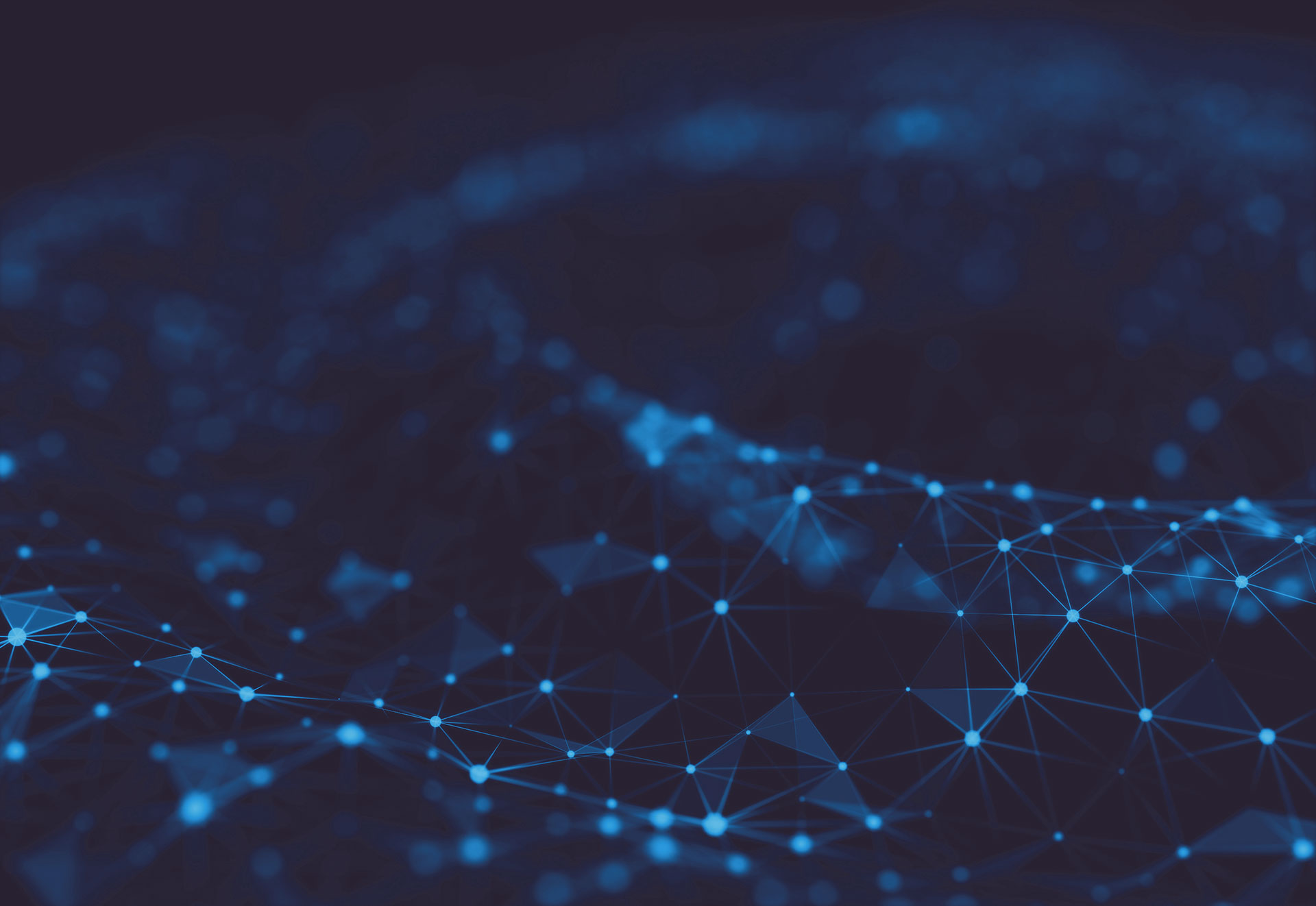
INSULATION COORDINATION FOR EQUIPMENT WITHIN LOW-VOLTAGE SYSTEMS - PART 5: COMPREHENSIVE METHOD FOR DETERMINING CLEARANCES AND CREEPAGE DISTANCES EQUAL TO OR LESS THAN 2 MM
Describes the dimensioning of clearances and creepage distances for spacings equal to or less than 2 mm for printed wiring board and equivalent constructions, where the clearance and the creepage dist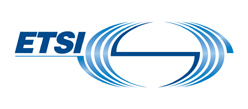
Integrated broadband cable telecommunication networks (CABLE); Fourth Generation Transmission Systems for Interactive Cable Television Services - IP Cable Modems; Part 2: Physical Layer; DOCSIS® 3.1
The present document is part of a series of specifications that defines the fourth generation of high-speed data-over-cable systems, commonly referred to as the DOCSIS 3.1 specifications.

Integrated broadband cable telecommunication networks (CABLE); Cabinet DOCSIS (C-DOCSIS) System Specification
The present document describes a method for distributed deployment and centralized control of a DOCSIS cable broadband access system in which the cable network equipment is used in a plant where fi

Integrated broadband cable telecommunication networks (CABLE); Energy management; Operational infrastructures; Global KPIs; Part 4: Design assessments; Sub-part 4: Cable Access Networks
Defining the Global KPIs for HFC Access networks and describing how the Global KPIs are to be applied.

Integrated broadband cable telecommunication networks (CABLE); Fourth Generation Transmission Systems for Interactive Cable Television Services - IP Cable Modems; Part 1: General; DOCSIS® 3.1
The present document is part 1 of a multi-part deliverable that define the fourth generation of high-speed data-overcable systems, commonly referred to as the DOCSIS® 3.1 specifications.

Integrated circuit cards -- Enhanced terminal accessibility using cardholder preference interface
ISO/IEC 12905:2011 specifies a set of data elements to be personalized into an integrated circuit card, encoding cardholder preferences.

Integrated circuit cards -- Enhanced terminal accessibility using cardholder preference interface
ISO/IEC 12905:2011 specifies a set of data elements to be personalized into an integrated circuit card, encoding cardholder preferences.
Intelligence Management Implementation Guide
The document provides guidance on the implementation of ODA Intelligence Management functional

Intelligent Transport System (ITS); Vulnerable Road Users (VRU) awareness; Part 2: Functional Architecture and Requirements definition; Release 2: VRU Architecture
The Technical Specification defines the VRU related requirements (stage 2); as well as the functional architecture of the VRU system (stage 3).

Intelligent transport systems
Standardization of information, communication and control systems in the field of urban and rural surface transportation, including intermodal and multimodal aspects thereof, traveller information,

Intelligent transport systems (ITS) — Guidance protocol via personal ITS station for advisory safety systems — Part 1: General information and use case definitions
ISO/TR 13184-1:2013 specifies guidance information protocol to provide real-time decision support system to drivers or pedestrians using personal ITS stations:

Intelligent transport systems (ITS) — Guidance protocol via personal ITS station for advisory safety systems — Part 2: Road guidance protocol (RGP) requirements and specification
ISO 13184-2:2016 specifies the road guidance use cases on the DXM to provide the real-time decision support system to drivers or pedestrians using P-ITS-S.

Intelligent transport systems (ITS) — Guidance protocol via personal ITS station for advisory safety systems — Part 3: Road guidance protocol (RGP) conformance test specification
ISO 13184-3:2017 specifies conformance tests for a self-conformance assessment of the supplier's P-ITS-S system.

Intelligent transport systems (ITS) — The use of personal ITS station to support ITS service provision for travellers
ISO 13111-1:2017 defines the general information and use cases of the applications based on the personal ITS station to provide and maintain ITS services to travellers including drivers, passengers

Intelligent Transport Systems (ITS); Framework for Public Mobile Networks in Cooperative ITS (C-ITS)
The scope of the work item is to (a) analyse cooperative ITS services using public mobile cellular networks for communications between ITS stations in order to identify related functional requireme

Intelligent Transport Systems (ITS); Infrastructure to Vehicle Communication; Electric Vehicle Charging Spot Notification Specification
Development of a Technical Specification for the broadcasting of dynamic information from a roadside unit / charging spot to Electric Vehicles (EV) related to the availability and capabilities of l

Intelligent Transport Systems (ITS); On-Board Weighing (OBW) equipment; protocol and data elements specification; Release 2
The scope of this standard is to define an access layer independent protocol for on-board weighing equipment based on the requirements defined in COMMISSION IMPLEMENTING REGULATION (EU) 2019/1213.

Intelligent Transport Systems (ITS); On-board Weighing Equipment (OBW); pre-standardisation study; Release 2
To investigate the requirements for the definition of access layer independent protocols between tractor and trailer

Intelligent Transport Systems (ITS); On-board Weighing Equipment (OBW); Security and Privacy study; Release 2
To investigate security and privacy issues for On-board Weighing Equipment.

Intelligent Transport Systems (ITS); On-board Weighing Equipment (OBW); Threat, Vulnerability and Risk Assessment (TVRA); Release 2
To prepare a Threat, Vulnerability and Risk Assessment for On-board Weighing Equipment

Intelligent Transport Systems (ITS); Vehicular Communications; Basic Set of Applications; Facilities layer protocols and communication requirements for infrastructure services
The present document provides specifications of infrastructure related ITS services to support communication between infrastructure ITS equipment and traffic participants using ITS equipment (e.g.

Intelligent transport systems — Communications access for land mobiles (CALM) — Data retention for law enforcement
ISO/TR 11769:2010 reviews the intelligent transport systems (ITS) landscape and the provisions of data retention (DR) to ITS deployments.

Intelligent transport systems — Communications access for land mobiles (CALM) — Security considerations for lawful interception
ISO/TR 11766:2010 reviews the ITS landscape and the provisions of lawful interception to ITS deployments.

Intelligent transport systems — Communications access for land mobiles (CALM) — Using broadcast communications
ISO 13183:2012 specifies the architectural communications framework of intelligent transport systems (ITS) for the family of communications access for land mobiles (CALM) related International Stan

Intelligent transport systems — Curve speed warning systems (CSWS) — Performance requirements and test procedures
ISO 11067:2015 contains the basic warning strategy, minimum functionality requirements, basic driver interface elements, minimum requirements for diagnostics and reaction to failure, and performanc

Intelligent Transport Systems — Interface Protocol and Message Set Definition between Traffic Signal Controllers and Detectors
ISO 10711:2012 defines protocols and message sets between traffic detectors and traffic signal controllers.

Intelligent transport systems — Lane keeping assistance systems (LKAS) — Performance requirements and test procedures
ISO 11270:2014 contains the basic control strategy, minimum functionality requirements, basic driver interface elements, minimum requirements for diagnostics and reaction to failure, and performanc

Intelligent transport systems — System architecture — Privacy aspects in ITS standards and systems
ISO/TR 12859:2009 gives general guidelines to developers of intelligent transport systems (ITS) standards and systems on data privacy aspects and associated legislative requirements for the develop

Intelligent transport systems — Use of nomadic and portable devices to support ITS service and multimedia provision in vehicles
ISO/TR 10992-2:2017 specifies the introduction of multimedia and telematics nomadic devices in the public transport and automotive world to support intelligent transport systems (ITS) service provi

Intelligent transport systems — Vehicle interface for provisioning and support of ITS services — Part 1: General information and use case definition
ISO/TR 13185-1:2012 specifies the communications architecture and generic protocol to provide and maintain ITS services to travellers (including drivers, passengers and pedestrians), using nomadic

Intelligent transport systems — Vehicle interface for provisioning and support of ITS services — Part 2: Unified gateway protocol (UGP) requirements and specification for vehicle ITS station gateway (V-ITS-SG) interface
ISO 13185-2:2015 specifies the requirements of an ASN.1-based protocol between a vehicle-ITS-Station Gateway (V-ITS-SG) and a nomadic and/or mobile device (ND) to easily exchange vehicle informatio

Inter-Cloud interface specification on protocols
Inter-Cloud interface specification on protocols (the Global Inter-Cloud Technology Forum is discontinued)

Inter-Cloud interface specification on resources data model for network control
Inter-Cloud interface specification on resources data model for network control (the Global Inter-Cloud Technology Forum is discontinued).

Interconnection of information technology equipment
Standardization of microprocessor systems; and of interfaces, protocols, architectures and associated interconnecting media for information technology equipment and networks, generally for commerci

Interconnection of information technology equipment
Standardization of microprocessor systems; and of interfaces, protocols, architectures and associated interconnecting media for information technology equipment and networks, generally for commerci

International specification for Material Management; Issue No. 7.0
The specification S2000M defines the processes, procedures and provides the information for data exchange to be used for material management throughout the lifecycle of a Product.
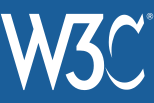
Internationalization Working Group
The mission of the Internationalization Working Group is to enable universal access to the World Wide Web by proposing an
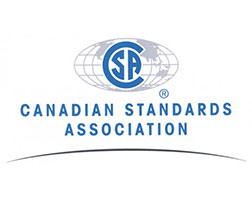
Internet of Things
IoT devices represent a wide variety of non-traditional devices that are increasingly implemented in organizations due to the numerous benefits.

Internet of Things (IoT) - Behavioral and policy interoperability
Based on ISO/IEC 21823-1, this document provides the basic concepts for IoT systems and digital twin systems behavioral and policy interoperability.
Internet of Things (IoT) - Data format, value and coding
Defines:- common formats,
- values, and
- coding for Internet of things (IoT).

Internet of Things (IoT) - Generic Trust Anchor Application Programming Interface for Industrial IoT Devices
ISO/IEC TS 30168:2021 specifies a generic programming interface for the integration of secure elements within Industrial IoT devices.

Internet of Things (IoT) - Interoperability for IoT Systems - Part 3: Semantic interoperability
Standardization in the area of Internet of Things and related technologies.

Internet of Things (IoT) - Interoperability for IoT Systems - Part 3: Semantic interoperability
Standardization in the area of Internet of Things and related technologies.

Internet of Things (IoT) - Interoperability for IoT systems - Part 3: Semantic interoperability
ISO/IEC 21823-3:2021 provides the basic concepts for IoT systems semantic interoperability, as described in the facet model of ISO/IEC 21823-1, including:
Internet of Things (IoT) - Reference architecture
This document specifies an Internet of Things (IoT) reference architecture (IoT RA).
Internet of Things (IoT) - Trustworthiness Principles
This document provides elements of IoT trustworthiness based on ISO/IEC 30141 - IoT Reference Architecture.
Internet of Things (IoT) and Digital Twin - Best practices for use case projects
This document describes best practices for use case projects in terms of characterization, template, plan and maintenance.
Internet of Things (IoT) — Compatibility requirements and model for devices within industrial IoT systems
This document specifies network models for IIoT connectivity and general compatibility requirements for devices and networks within IIoT systems in terms of:

Internet of things (IoT) — Interoperability for IoT systems — Part 1: Framework
This part of standards presents an overview of interoperable IoT systems and framework for

Internet of things (IoT) — Interoperability for IoT systems — Part 2: Transport interoperability
This document presents a conceptual model for network connection interoperability and requirements for interoperable IoT systems to enable information exchange, peer-to-peer connectivity and seamle

Internet of things (IoT) — Interoperability for IoT systems — Part 3: Semantic interoperability
This document provides the basic concepts for IoT systems semantic interoperability, as
described in the facet model of ISO/IEC 21823 -1, including:

Internet of things (IoT) — Interoperability for IoT systems — Part 4: Syntactic interoperability
This part of standard specifies the IoT interoperability from a syntactic point of view. In ISO/IEC 21823-1: Framework [2], five facets are described for IoT interoperability, i.e.

Internet of Things (IoT) — IoT applications for electronic label system (ELS)
This document specifies the system framework, IoT application model and overall technical requirements for ELS.

Internet of Things (IoT) — Real-time IoT framework
This document specifies the framework of a real-time IoT (RT-IoT) system, including:

Internet of Things (IoT) — Reference Architecture
This document specifies a general Internet of Things (IoT) Reference Architecture.

Internet of Things (IoT) — Requirements of IoT data exchange platform for various IoT services
This document specifies requirements for an Internet of Things (IoT) data exchange platform
for various services in the technology areas of:

Internet of Things (IoT) — System requirements of IoT/SN technology-based integrated platform for chattel asset monitoring supporting financial services
ISO/IEC 30163:2021 specifies the system requirements of an Internet of Things (IoT)/Sensor Network (SN) technology-based platform for chattel asset monitoring supporting financial services, includi

Internet of things (IoT) — Trustworthiness framework
This document provides principles for IoT trustworthiness based on ISO/IEC 30141 – IoT Reference Architecture.

Internet of Things (loT) — Reference Architecture
This document provides a standardized IoT Reference Architecture using a common vocabulary, reusable designs and industry best practices.

Internet of Things (loT) — Reference Architecture
This document provides a standardized IoT Reference Architecture using a common vocabulary, reusable designs and industry best practices.

Internet of Things and Digital Twin
Standardization in the area of Internet of Things and Digital Twin, including their related technologies.